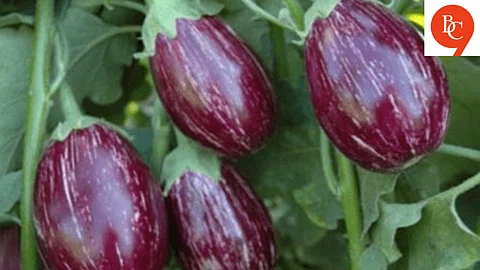

Whether you have a balcony, terrace, or a small backyard, growing brinjal in small spaces is easy and rewarding. Here’s a detailed guide to help you cultivate your own brinjal plants this monsoon.
Why Grow Brinjal at Home This Monsoon?
Ideal Climate: Brinjal thrives in warm, humid weather, and the monsoon offers just that.
Fresh & Chemical-Free: Homegrown brinjals are organic and free from pesticides.
Space-Efficient: Brinjal plants adapt well to containers, making them ideal for small urban gardens.
Nutrient-Rich: Brinjal is packed with fiber, antioxidants, and vitamins.
Steps to Follow:
1. Choose the Right Variety & Container
Start with compact or dwarf varieties like Baby Brinjal, Indian Long Purple, or hybrid dwarf types—perfect for pots. Use a container at least 12–15 inches deep, with drainage holes. Terracotta pots, grow bags, or large plastic containers all work well.
2. Prep the Soil & Sow Smartly
Brinjal loves well-draining, nutrient-rich soil. Mix garden soil and compost in a 2:1 ratio, adding vermicompost or organic fertilizer. Start seeds indoors 4–6 weeks before monsoon or get seedlings from a nursery. Transplant them once they have 4–5 true leaves.
3. Sunlight & Watering Routine
Place your plant in a spot with 6–8 hours of direct sunlight—balconies, terraces, or sunny windows work best. Water consistently to keep the soil moist but never soggy. Early morning watering ensures proper absorption and avoids root rot.
4. Feed, Support & Prune Regularly
Fertilize every 2–3 weeks using organic options like cow dung slurry or neem cake powder. Support the plant with stakes as it grows tall, and prune yellow or dead leaves. Pinch off the growing tip after 5–6 fruits to promote bushy growth.
5. Keep Pests Away & Harvest Right
Use neem oil or garlic-chili spray to deter pests like aphids or whiteflies. Maintain good airflow and remove infected leaves to prevent diseases. Harvest brinjals 60–80 days after transplanting when they're shiny, firm, and tender—cut with a sharp tool, leaving the stem intact.
Growing brinjal at home this monsoon is a gratifying way to connect with nature, add fresh produce to your kitchen, and utilize your small space creatively. With the right care, your brinjal plants will flourish, offering you delicious, homegrown vegetables right at your doorstep.
